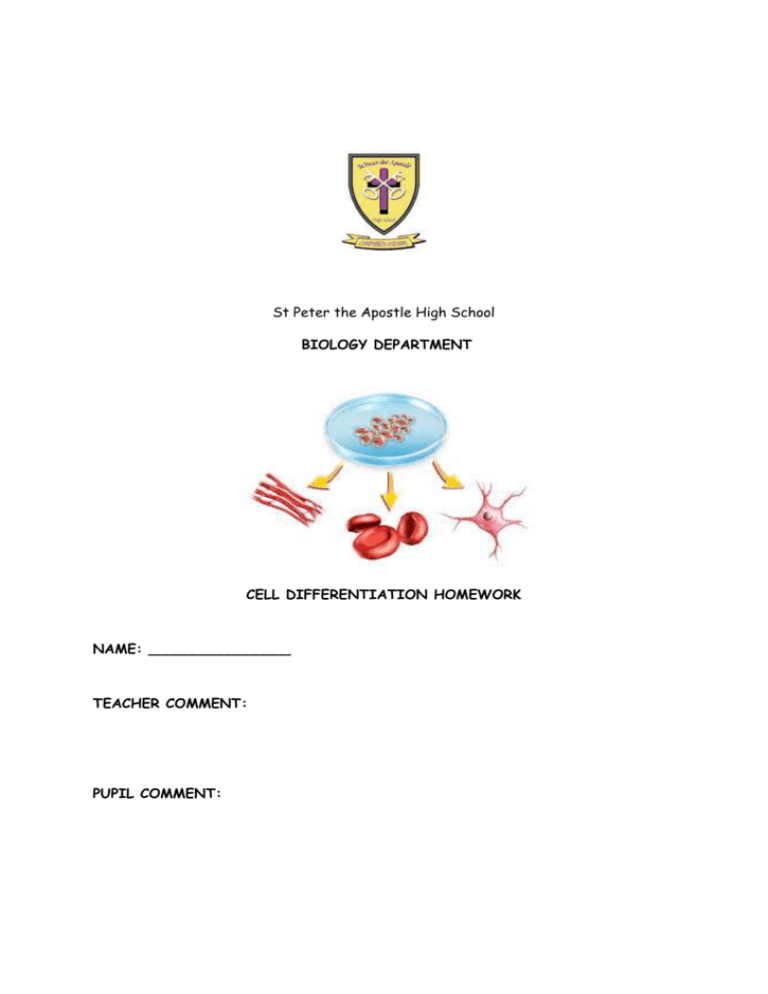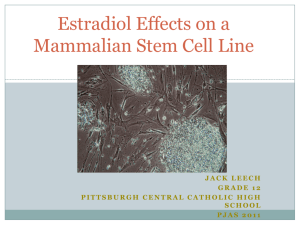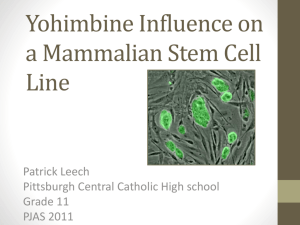Cell Differentiation - St Peter the Apostle High School
advertisement

St Peter the Apostle High School BIOLOGY DEPARTMENT CELL DIFFERENTIATION HOMEWORK NAME: ________________ TEACHER COMMENT: PUPIL COMMENT: PARENT COMMENT: HOMEWORK 1 1. Which of the following is not a use of stem cells? A Skin grafts B Drug testing C IVF treatment D Bone marrow transplant (1) 2. Which line in the table below describes correctly cell division in a specific cell type? 3. The diagram below shows some stages in the development of blood cells and nerve cells. (1) (a) What are stem cells? (1) (b) State the location of the tissue stem cells which develop into blood cells. (c) Describe what is meant by the term differentiation. (1) (1) (d) Both embryonic stem cells and tissue stem cells are used in medical research. Give one reason why embryonic stem cells are potentially more useful than tissue stem cells. (1) 4. The human body contains hundreds of cell types all of which have developed from stem cells in the early embryo. (a) Name two types of cell that may develop from tissue stem cells in red bone marrow. 1. 2. (1) (b) (i) What type of cell division only occurs in germline cells? (1) (ii) Suggest why mutations in germline cells could have serious consequences. (1) (c) A company has developed a drug that could treat the symptoms of an inherited disease. Before proceeding to clinical trials using volunteers, the company decides to carry out additional tests in the laboratory using stem cells. What ethical considerations might have influenced this decision to use stem cells? (2) 5. A scientist is working on a stem cell line and is investigating the necessary growth conditions needed to make the stem cells differentiate into blood cells. The cultures were set up on day 0. The scientist took the original flask of cells, counted the cell number and made sure each of the new flasks received the same cell number (as shown below). Original flask of cells Flask 1 Flask 2 with 4 × 10 5 cells with 4 × 10 5 cells per cm 3 per cm 3 a) The scientist performed a five-fold dilution of the cells before transferring them into flasks 1 and 2. How many cells per cm 3 were in the original flask if the original flask contained 20 cm 3 of growth media? __________ cells per cm 3 b) After 6 days of collecting results the scientist analysed the data, which is shown in the table below. (Note: Viable just means the cells that are alive). Flask 1 – media only Flask 2 – media + cytokine Viable cell number × 10 5 per cm 3 Viable cell number × 10 5 per cm 3 Day result collected 0 4.0 4.0 2 4.6 4.6 4 5.0 9.2 6 3.3 10.7 8 2.1 13.8 10 1.2 27.6 12 0.3 32.9 i) Use this data to plot a graph of the results of this experiment ii) What conclusion can you draw from these results? b) Why did the scientist put the same cell number into flasks 1 and 2? (3) (1) (1) HOMEWORK 2 1. Give an account of cell differentiation under the following headings. (i) Stem cells; (4) (ii) Somatic cells; (4) (iii) Germline cells. (2)









